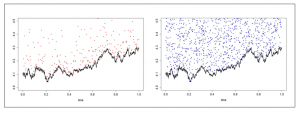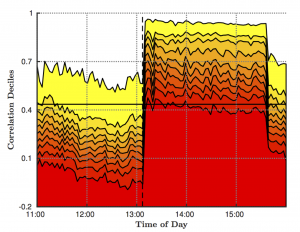
Markus Bibinger from the University of Marburg, Moritz Jirak, from TU Braunschweig and Markus Reiss from Humboldt University Berlin, published a paper using Lobster data. It is titled Volatility estimation under one-sided errors with applications to limit order books and is forthcoming in Annals of Applied Probability.
Abstract: For a semi-martingale X_t, which forms a stochastic boundary, a rate-optimal estimator for its quadratic variation ⟨X,X⟩_t is constructed based on observations in the vicinity of X_t. The problem is embedded in a Poisson point process framework, which reveals an interesting connection to the theory of Brownian excursion areas. We derive n^−1/3 as optimal convergence rate in a high-frequency framework with n observations (in mean). We discuss a potential application for the estimation of the integrated squared volatility of an efficient price process X_t from intra-day order book quotes.
A working paper version is found here.
